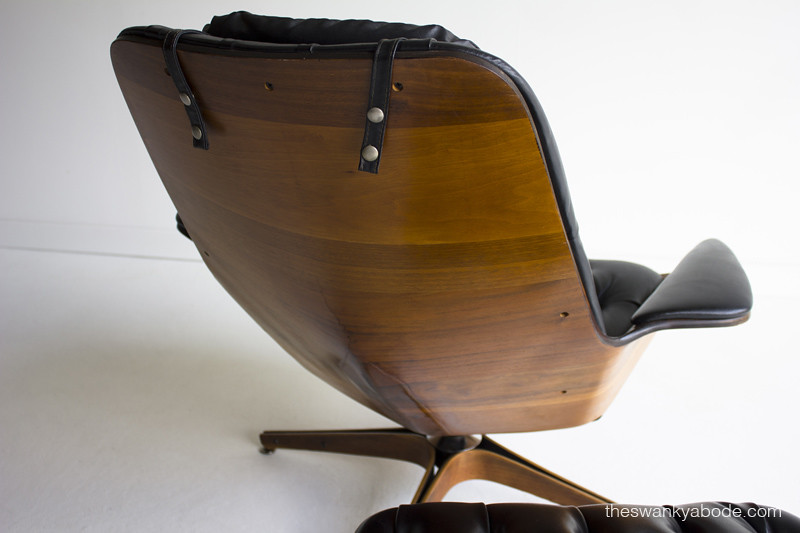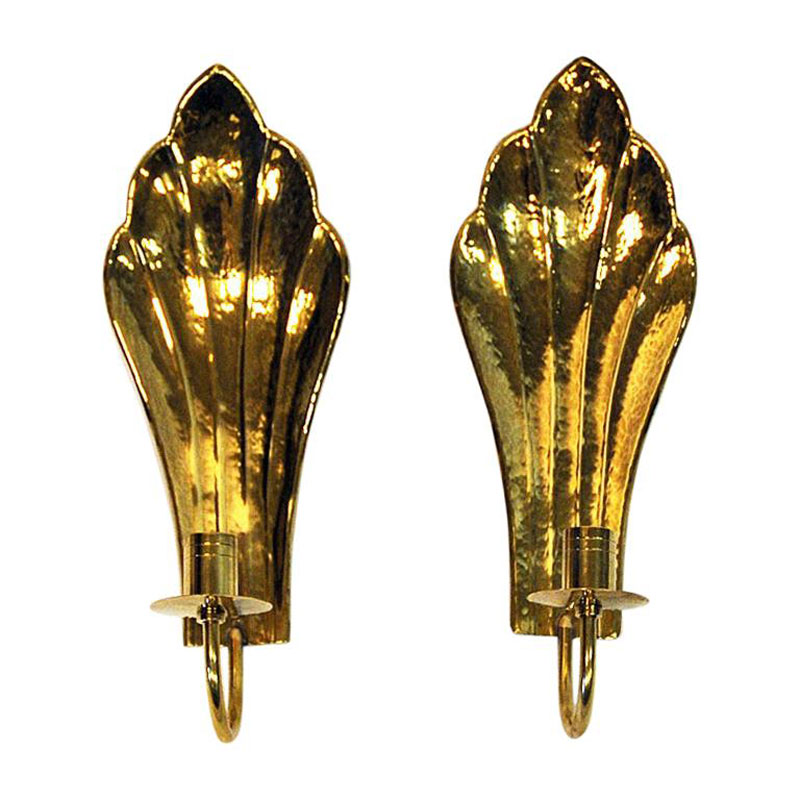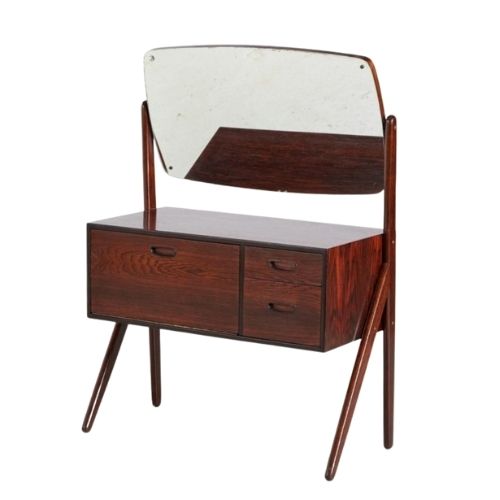Dude, that chair is beat. The amount of work you are going to have to put in here is hardly worth it.
The plywood is so weathered that I doubt you will ever be able to restore it. It is completely delam-ing on that front edge. It is cracked in a major structural area. The tilt/swivel mechanism is toast.
You are definitely a glutton for punishment. If you insist on trying, which I am sure you will, you need to take the entire thing apart. The shell needs to be sanded, it is the only way you can have any chance of restoring the color to it. You have to remove the damaged wood. It is laminate, so dont sand through. Start with 150 and go up to 220, then lots of oil. That crack needs to be filled with epoxy, and clamped.
The mechanism needs to be disassembled, rust removed, repainted, oiled. It stays tilted because it is missing or has a damaged spring, you will need a new one. Probably better off just finding a parts chair, but unfortunately you need all the parts, so like I said, probably better off just buying a different chair.
Maybe this advice will make you see the reality here, or maybe it will just piss you off, and make you more resolute to prove me wrong ....... in either case, it has served its purpose, because what you should do is walk away, and if you are going to continue on you will need to do an inordinate amount of work to revive this mess.
Good luck!
I doubt very much that it's a knockoff. The Plycraft Eames lounge chair wannabe was also made with slight variations in arms and dimensions by other companies but I'm not aware of a Mister knockoff from that era.
If you want an even finish on the wood, you should remove all the original finish first. Some of these were varnished, in which case you need to use a chemical stripper. I think I've seen them lacquered, and then you can use acetone. You could also sand off the old finish but then you run the risk of sanding through the veneer---plus you lose the color that the walnut has taken on with age. I have gotten rid of some pretty bad water spotting and fading just with teak oil and #0000 steel wool. You can always sand after trying that.
I'm not sure what "rejuvenation oil" is--Watco Rejuvenating Oil, maybe? I've never used that stuff but I'm sure others here are familiar with it.
These chairs did not have upholstered backs. I found one example here but the photo of whatever is going on with that seam in back isn't terribly clear. Maybe the blogger who posted it originally can help you (the name is stamped in the corner).
The tilt mechanisms on old plycraft lounge chairs are more often broken than intact! I reupholstered a few of the Eames wannabes but never replaced a tilt thing, though some needed it. If you google "plycraft swivel replacement parts" you'll find a place that sells something that supposedly works. I have no personal experience with it, though.
Hey, i bought plenty of near-worthless pieces when I was starting out. It was very good experience to practice on them and learn what worked and what didn't. I have also restored some rather high end stuff and endured a lot of stress in making sure everything was done correctly, and well. I say go for it!
I use Star-Brite Teak Oil from Ace Hardware but there are other products that are just as good. Everyone has their favorite.
Plycraft lounge chairs had a tinted clear finish of some sort on the wood (see above) that I guess was intended to even out the grain. I have stripped it off a couple of them and was really pleased with the results. The one shown here had some very tough varnish on it--i had to get the most expensive paste stripper to get it off. Cheaper ones didn't work. Neither did Citrus-strip. Or they did work but only verrrrry slowly. Then I cleaned off the residue and oiled it--maybe two coats? Maybe three? I don't remember. Stripper leaches moisture and oil out of the wood.
I don't have a before photo of this chair but there are plenty of others online. The tinted clear coat muddies the grain. Maybe it looked good when new but no so much after 50 years.
I salute you sir. I took on more of these than I wish to admit starting out, so dont take my advice the wrong way. You can't really screw this one up, so experiment away. You can try evening out any deep staining with Oxalic Acid. Sand very carfully, and pay very close attention to what you are doing. Take your time, courser grit will speed up the process, but also speed up your ability to make mistakes. Post some pictures once you have all the damage cleaned up, and we can discuss finish options.
For that price it's well worth the risk! Great opportunity to see what works and what doesn't. I think sometimes when you manage to bring something back to life you love it that much more than other items you have bought. I think it's a good buy and hope you update as you get to work on it!
Thanks everybody for the words of encouragement. Hand sanding it all so far. Used 150 and 180 on one of the arms and it's coming out great. To speed up the process on the large real estate of the back, i've been using 120 for a bit then switching to 150 and 180 to smooth it out. When I've got every surface taken down to where I am comfortable with, i'll give it a once-over with 220.
Pics to come soon!
I just picked up one of these chairs. I am also trying to figure out how the tilt mechanism works. It has a Flo-Tilt 363 stamped on the base. It just flops front to back, no resistance at all. The previous owners had some hard rubber wedged in between the mechanism to hold it somewhat stationary. Been searching for a while and have found nothing on what is missing that allows this to work properly??
Those Flo-Tilt replacement cylinders haven't been made since the early '80's, I think. There were occasional NOS ones that would pop up on eBay from time-to-time, but I doubt you'd find many, if any, lately. They're filled with rubber, which dries out, hardens, and crumbles. They all failed.
You're best off replacing the entire mechanism.
If you need any help, please contact us at – info@designaddict.com










